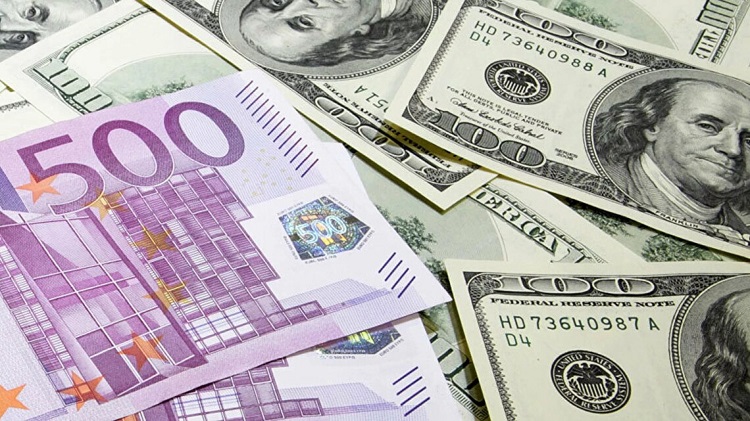Аs early as January 2024, Ukraine could face a financial shortfall unless promised assistance from our international partners materializes. In response, the government has a contingency plan, labeled "Plan B," which involves, at least initially, increasing domestic borrowing. "Apostrophe" delved into the realism of such a plan and explored potential steps the government might take, including unpopular measures, to offset the aid shortfall from the West.
Ukraine could initiate the execution of the so-called "Plan B" as early as January 2024, should it become evident that financial assistance from Western nations is not forthcoming. Presidential advisor Oleg Ustenko made this announcement during a recent broadcast on the national telethon.
‘If support is absent in the early days of January, it signifies the need to pivot to 'Plan B.' While 'Plan B' may have multiple layers, I believe that initially tapping into the domestic market for capital borrowing would suffice,’ Ustenko remarked.
According to the 2024 state budget, foreign aid for our country is projected to amount to 41 billion hryvnias next year. However, Finance Minister Sergey Marchenko recently revealed that the need for external financing in 2024 has been reduced to 37.3 billion dollars.
Meanwhile, the allocation of funds by our primary partners, the United States and the European Union, is far from guaranteed. In the best-case scenario, we are looking at, at most, slightly over half of the aforementioned amount.
According to the latest information, the U.S. Congress will not be able to consider providing assistance to Ukraine until the end of this year. As for the EU, Hungary is currently blocking the approval of the funding package for our country. While the European Commission and other member states are exploring ways to bypass Budapest's veto, even if solutions are found, the timeline for the funds reaching our accounts remains uncertain.
Government bonds and taxes
To make up for the funds Ukraine will not receive, or might receive belatedly, from its international partners, a contingency plan, dubbed "Plan B," has been devised.
Experts surveyed by Apostrophe generally agree that the shortfall can, at least partially, be offset through domestic borrowings.
‘The strategies for funding the budget shortfall are familiar, having been utilized by the Ukrainian government in 2014-2015. The state has the option to issue domestic bonds, thereby addressing budgetary needs. Although this method escalates the budget's debt load, it meets current demands effectively,’ Oleh Hetman, the coordinator of expert groups at the Economic Expert Platform, stated.
There are other means that should not be discounted either. In particular, according to Hetman, a competent reboot of the Bureau of Economic Security and the customs service will provide up to 100 billion hryvnia of additional revenue to the budget.
Ilya Neskhodovsky, Head of the Analytical Department at ANTS – National Interests Advocacy Network, also sees promising opportunities for securing additional funds through the placement of domestic government bonds. Additionally, he suggests the potential for raising certain taxes and levies.
‘The government will probably have to consider increasing taxes, in particular VAT. Excise taxes on certain goods could see an increase as well, noted the expert. Additionally, there could be the introduction of special taxes targeting specific categories of businesses. Drawing from the current year's precedent, a special tax on bank profits at a rate of 50% was implemented. Therefore, in the event of a significant funding shortfall, the government and parliament could extend this practice to other sectors with lucrative operations,’ Neskhodovsky said.
Against the backdrop of a possible decrease in budget revenues, it makes sense to think about cutting some expenses, the expert notes.
‘First and foremost, it's crucial to cease spending on сonstruction works. Also, I think it is worth making a decision to stop paying bonuses to civil servants - nationwide this could lead to billions of hryvnia in savings,’ – he suggests.
Emission is unavoidable
It is not ruled out that the U.S. and the EU will demonstrate political will and deliver the promised funds—fully and on time. However, as the saying goes, hope for the best but prepare for the worst.
It is evident that domestic borrowings will help Ukraine to stay afloat for a while. However, in the face of a severe deficit in foreign aid, these resources will not last long, Alexey Kusch, an expert at the analytical center ‘United Ukraine’ argues.
‘There is not much to tap into on the domestic market. Our domestic borrowing market is practically non-existent—it ceased to exist with the onset of full-scale Russian invasion. Currently, there are situational purchases of war bonds by the population, totaling around 30 to 50 billion hryvnias. Businesses are hardly buying bonds due to economic challenges. Banks could make purchases, but again, the capacity is limited to around 100 billion hryvnias,’ Kusch urges.
If next year's deficit in external financial assistance reaches around $20 billion, approximately 800 billion hryvnias, it's highly unlikely that such funds can be sourced from the domestic market.
‘So, we will have to turn not to the domestic market but to the National Bank, asking it, as it did at the start of the war, to print around 400 billion hryvnias,’ says Alexey Kush. ‘It is a relatively harmless issuance. It will, of course, accelerate inflation, let us say, from 10% to 20%, but it is not as critical as leaving military personnel on the front lines without their salaries.’
Monetary issuance will also lead to a depreciation of the hryvnia exchange rate.
‘The national currency will undergo devaluation inevitably. However, as the National Bank holds approximately $39 billion in foreign reserves, a devaluation as profound as in 2022 is not anticipated,’ the expert explains. ‘If inflation reaches 20%, the devaluation is expected to be within the range of 15-25%.’
Well, let's dare to undertake some mathematical calculations. Based on the current exchange rate, in the event of a substantial monetary issuance, the dollar is projected to be valued at 43-47 hryvnias in 2024.


